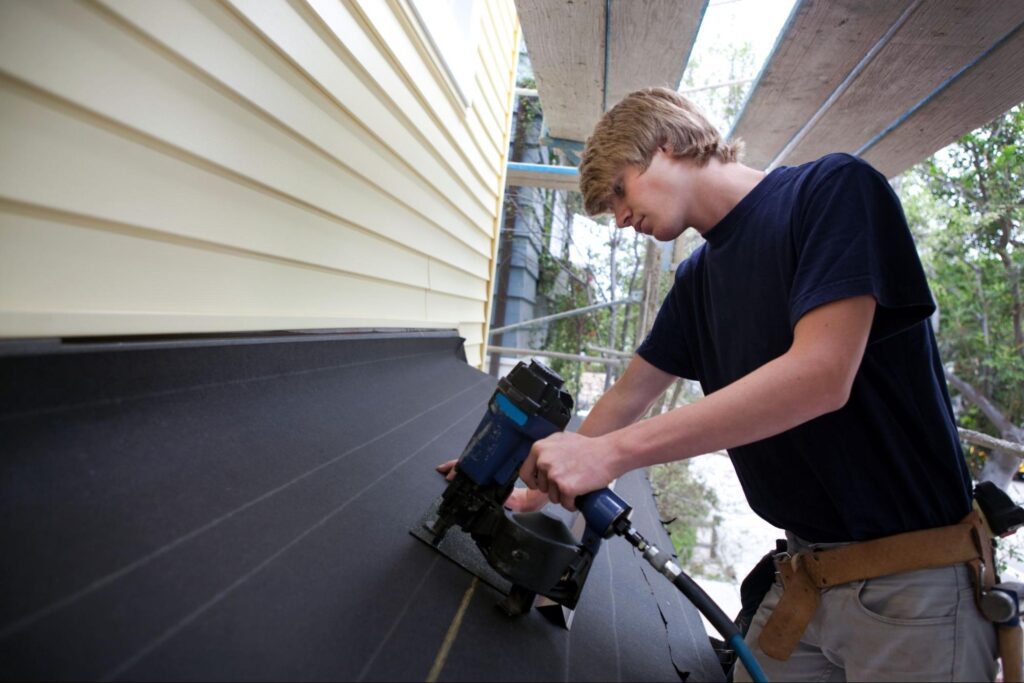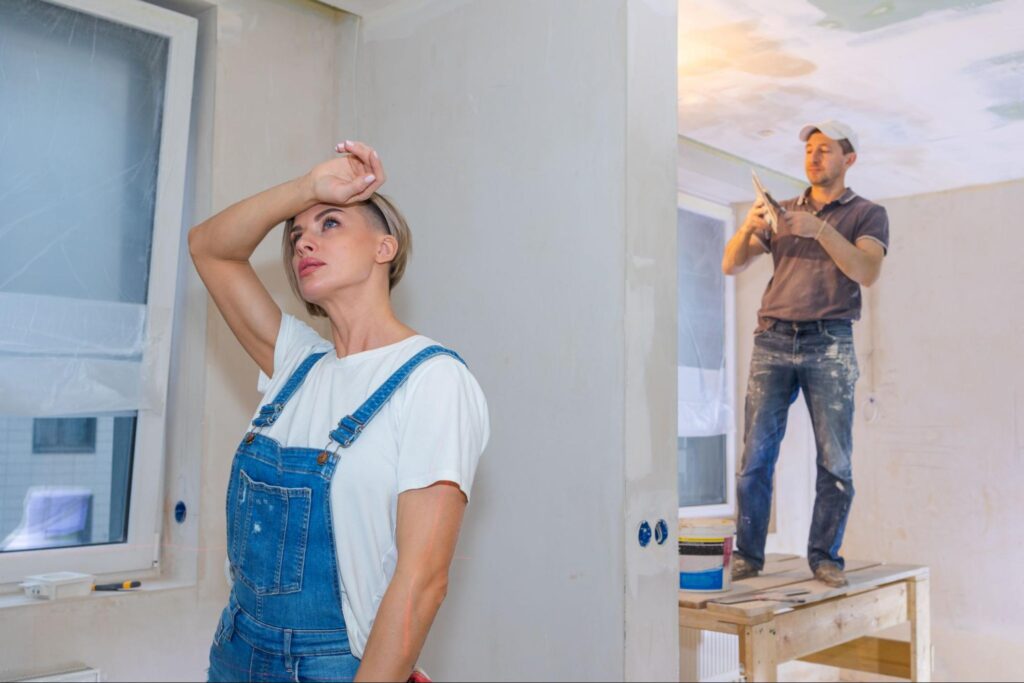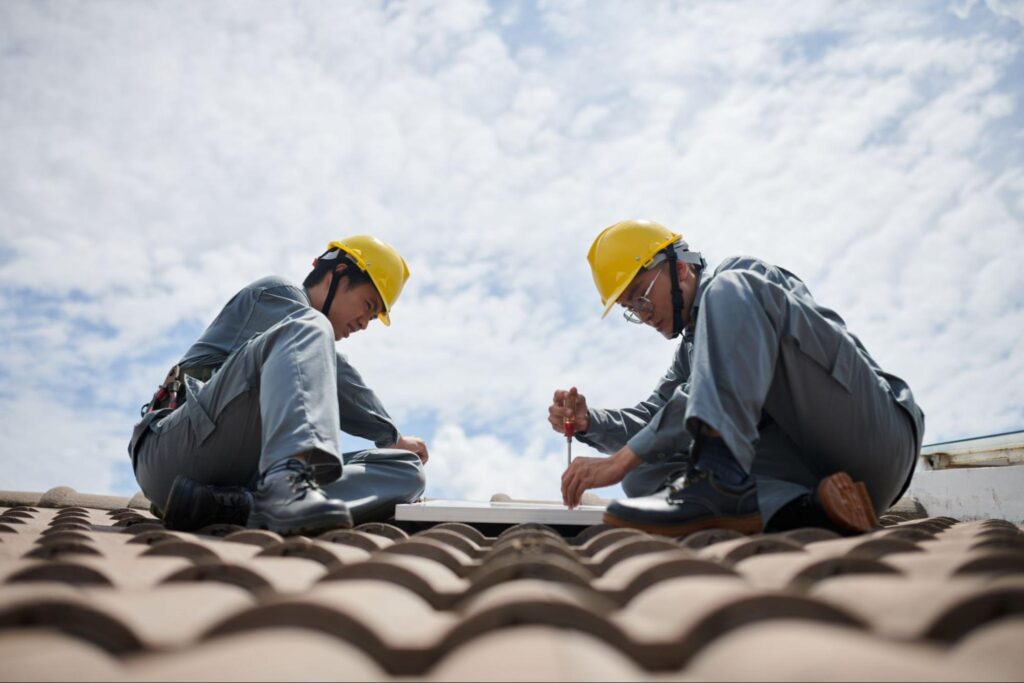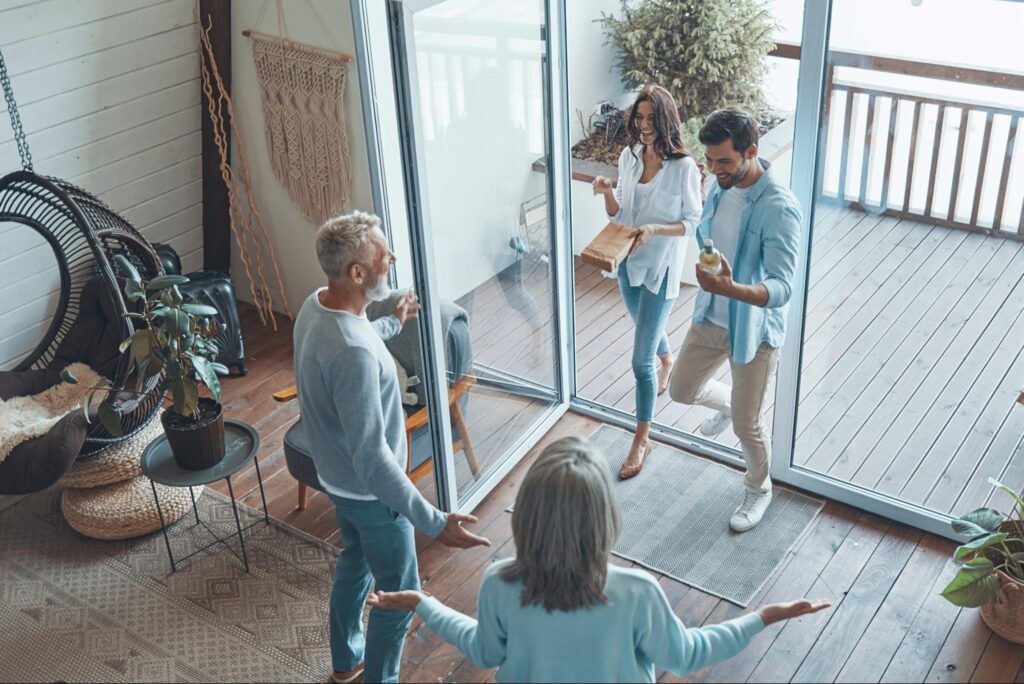Siding is your home’s first line of defense against weather and wear. It also contributes to insulation, keeping your home energy efficient year-round. When siding becomes damaged or outdated, it compromises both protection and appearance. Many homeowners need help deciding whether to repair minor issues or invest in a total replacement. The right decision depends on the damage, your budget, and your long-term goals for your property. Benefits of Siding Repair and Replacement Siding is more than a decorative feature; it protects your home from the elements. Promptly addressing siding issues ensures your home remains safe and functional. Both repair and replacement offer unique benefits that cater to different needs and situations. Advantages of Siding Repair Siding repair is often an innovative, cost-effective solution for minor damage. Repairs target specific problem areas, saving money while extending the life of your siding. This approach can preserve your home’s current design and prevent further complications. Quick fixes to isolated issues can go a long way in maintaining siding performance. Advantages of Siding Replacement Siding replacement is a transformative option that renews your home’s exterior entirely. It’s ideal for dealing with extensive or recurring damage that repairs cannot solve. Replacement materials are often more energy-efficient and durable, offering better long-term value. Updating your siding strengthens your home and increases its appeal and market value. Types of Siding Repairs and Damages Understanding the types of siding damage helps you decide whether to repair or replace it. Knowing the cause and extent of the problem ensures you take the right approach to maintaining your siding’s integrity. Cracks, Holes, and Gaps in Siding Small cracks, holes, and gaps can compromise your siding’s performance. These issues often result from weather, accidents, or aging materials. Left unaddressed, they allow water and pests to penetrate, leading to further damage. Repairing these problems quickly restores both functionality and appearance. Warping, Buckling, and Rot Issues Siding issues like warping, buckling, and rot significantly weaken your home’s protection. Warping can occur due to heat or moisture, while rot is common in wood siding. These problems require careful evaluation to determine whether repair or replacement is best. Fixing such issues maintains the structural integrity of your siding. Factors to Consider in Siding Repair or Replacement Deciding between siding repair and replacement requires a thoughtful approach. Critical factors like damage extent, material age, and long-term goals come into play. Understanding these elements ensures your decision meets both budget and durability requirements: Extent of Damage for Siding Repair or Replacement The scale of the damage often determines whether siding repair or replacement is the right choice. Minor, localized issues can usually be fixed efficiently, saving money. Widespread damage, however, may require replacement to ensure your home’s protection. Professional assessments can help you determine the best path forward. Considering Age When Opting for Siding Repair The age of your siding is an essential factor when weighing your options. Older materials may no longer perform well, making replacement the more practical solution. Newer siding is often worth repairing since it still offers good durability. Balancing age with the current condition ensures you get the most out of your investment. Common Siding Materials and Their Repair Needs Different siding materials respond to damage in unique ways. Understanding the characteristics of each type helps determine whether repair or replacement is the best option. Knowing their vulnerabilities and maintenance requirements simplifies the decision-making process. Vinyl Siding Repairs Vinyl siding is durable but prone to cracking and warping under extreme conditions. Repairs typically involve patching small cracks or replacing damaged panels. Its ease of installation makes vinyl a popular choice for cost-effective siding repair. Regular inspection can help catch issues early, extending its lifespan. Wood Siding Repairs Wood siding offers a classic aesthetic but is highly vulnerable to rot and insect damage. Typical repairs include replacing rotted boards, applying sealants, and treating the wood to prevent future deterioration. Maintenance, such as painting or staining, is essential to preserve its appearance and strength. Despite its charm, wood siding requires consistent care to avoid costly repairs. Fiber Cement and Aluminum Repairs Fiber cement siding resists rot and pests but can crack or chip over time. Repair involves patching minor cracks or replacing entire sections if damage is extensive. Aluminum siding is lightweight and weather-resistant but may dent or corrode. Simple maintenance, like filling dents or applying anti-corrosion treatments, can restore its performance. Costs and Long-Term Value of Siding Repair Siding decisions also revolve around costs and their impact on your home’s value. Repairing siding costs less upfront but may not address underlying issues. Replacement requires a more considerable initial investment but provides long-term savings and property enhancements. Comparing Costs of Siding Repair and Replacement Repair costs are often more affordable in the short term. Replacement involves higher expenses upfront but offers better longevity and fewer future repairs. The choice depends on your budget, the material used, and the extent of damage. Consulting professionals ensure you understand the costs involved for each option. Long-Term Value of Siding Repair and Replacement Siding is crucial to your home’s curb appeal and market value. Replacement significantly enhances these aspects by offering a refreshed appearance and better insulation. Repairs can maintain existing value but don’t typically result in noticeable improvements. Opting for quality siding materials benefits both current comfort and future resale potential. Siding Repair vs. Replacement: Choosing the Best Option Choosing between siding repair and replacement involves balancing needs and priorities. Professional guidance and consideration of aesthetics and functionality help simplify the process. Making the right decision ensures your home remains beautiful and durable for years. Professional Inspection for Siding Repair Decisions Professional inspections are invaluable when deciding whether to repair or replace siding. Experts can detect hidden issues that may affect your decision. Their recommendations are based on the condition of your siding and material options. Seeking guidance ensures you make a well-informed choice that aligns with your budget. Balancing Aesthetics and Functionality in Siding Repair Aesthetic and functional needs often intersect in siding decisions.…
Read MorePosts by Minnesotas 1st Choice Replacement Windows and Doors
Common House Remodeling Mistakes and How to Avoid Them
Initiating a house remodeling project can be both thrilling and daunting. The idea of transforming your space into a reflection of your lifestyle and personality is advantageous. However, even the most exciting plans can go awry without careful consideration. Homeowners often feel overwhelmed by unforeseen costs, design regrets, or construction setbacks. Understanding common house remodeling pitfalls allows you to make informed decisions and turn your vision into a successful reality. House Remodeling Mistakes to Avoid for a Smooth Renovation Embarking on a home remodeling project is an exciting opportunity to enhance your living space, increase property value, and bring your vision to life. However, what starts as a dream renovation can quickly become stressful and costly without careful planning. From budget miscalculations to design oversights, homeowners often encounter common pitfalls that can delay progress and lead to regrets. Identifying these mistakes in advance can ensure a smoother, more successful remodeling experience: Planning Mistakes in House Remodeling Effective planning lays the foundation for a successful house remodel. Diving in without a clear plan often leads to oversights, delays, or budget problems. Proper preparation ensures a smoother remodeling process and fewer unwelcome surprises. Unrealistic Budgeting Many homeowners tend to underestimate costs. Unexpected expenses, such as structural repairs or material upgrades, can throw budgets off track. Researching average fees for your desired upgrades and including a contingency fund is essential. Allocating at least 15% of your budget to handle unforeseen issues ensures financial peace of mind. Ignoring Professional Advice DIY projects seem cost-effective but can often lead to costly mistakes. Without professional expertise, even minor missteps can escalate into significant issues. Experts offer valuable insights into design, materials, and construction techniques. Consulting professionals early in the process helps you avoid errors that can derail your project. Design Errors in House Remodeling A great design balances aesthetics and functionality, ensuring your remodel serves form and purpose. Poor design choices can make your home less practical, more challenging, or visually unappealing. Relying solely on trends or ignoring your home’s existing architecture are common mistakes. Smart design decisions ensure your remodel achieves its full potential. Overemphasis on Aesthetics Focusing too much on appearance can lead to impractical spaces. Functional considerations like storage and layout should always guide your choices. Thoughtful design ensures that your home remains beautiful and livable. Balancing style and usability avoids regrets long after the project is complete. Misaligned Styles and Features Combining mismatched design elements can make a space feel disjointed. Inconsistent materials, colors, or architectural features reduce visual harmony. Aligning new updates with your home’s existing character creates a cohesive and timeless look. A unified aesthetic elevates your home’s overall appeal. Construction Mistakes in House Remodeling Even with a solid plan and design, poor execution can undermine your remodeling efforts. Cutting corners during construction often results in subpar outcomes and costly fixes. Prioritizing quality craft and clear communication helps ensure the remodel stays on track. Inadequate Permits and Compliance Skipping permits or failing to adhere to local building codes has serious consequences. Unpermitted work can result in fines, legal disputes, or unsafe conditions. Proper permitting processes protect your investment and ensure the remodel meets safety standards. Being thorough from the beginning avoids complications down the line. Hiring the Wrong Contractors Selecting contractors without proper research can compromise your project. Low-cost options often result in poor quality, missed deadlines, or hidden fees. Always check references, verify licenses, and review portfolios before hiring. Trustworthy contractors deliver reliable results and reduce stress throughout the remodeling process. Overlooking Structural Integrity in House Remodeling Structural integrity is the backbone of a safe and durable remodel. Many homeowners focus on cosmetic changes without addressing underlying structural concerns. A thorough evaluation of the home’s framework ensures your remodel is beautiful and stable. Neglecting Foundation Repairs Foundation issues like cracks, settling, or water damage often go unnoticed. Cosmetic fixes, like new flooring or walls, can temporarily hide these problems. Addressing foundation issues early avoids expensive repairs later. Professional inspections should always be part of the remodeling process. Altering Load-Bearing Walls Removing or altering load-bearing walls without proper reinforcement compromises the home’s structure. Some homeowners skip consulting an engineer, leading to sagging ceilings or structural instability. Always involve professionals to evaluate and safely redesign these elements. Structural changes must prioritize safety above aesthetics. Neglecting Proper Ventilation Proper ventilation is critical for maintaining air quality and preventing moisture issues. Many remodeling projects focus on aesthetics while neglecting airflow improvements. Poor ventilation can lead to mold growth, trapped odors, or excessive humidity. Neglecting Bathroom and Kitchen Ventilation Bathrooms and kitchens are prone to moisture buildup due to daily activities. Poorly ventilated spaces encourage mold growth and damage to finishes over time. Installing exhaust fans or upgrading existing systems is essential. Adequate ventilation keeps these spaces fresh and prevents long-term damage. Ignoring Natural Ventilation Opportunities Homeowners often overlook opportunities to improve natural airflow during a remodel. Adding operable windows, transoms, or strategically placed vents enhances ventilation without relying solely on mechanical systems. A balance of natural and artificial ventilation improves comfort and reduces energy costs. Maximizing airflow should be part of any thoughtful remodel. Underestimating the Time Commitment One of the most common mistakes homeowners make is misjudging how long a remodeling project will take. Unrealistic expectations can lead to stress, frustration, and rushed decisions. Understanding the timeline ensures smoother project management. Misjudging Permit and Inspection Timelines Obtaining permits and passing inspections often take longer than anticipated. Rushing the process can result in fines or delays if you fail to meet the requirements. Planning for potential delays in advance helps set realistic expectations. Working closely with your contractor can streamline these steps. Failing to Account for Lead Times on Materials Custom materials like cabinets, countertops, or specialty tiles often have extended lead times. Homeowners sometimes assume everything is readily available, which is rarely true. Ordering materials early avoids frustrating delays, and advanced planning keeps the remodel on schedule. Focusing Too Much on DIY The DIY approach appeals to homeowners looking to save…
Read MoreRoof Replacements vs. Repairs: Making the Right Choice
A sturdy, well-maintained roof is a cornerstone of a safe home. It shields your family and belongings from the elements, ensuring comfort and security. Over time, roofs face wear and tear, leaving homeowners to decide between roof repairs or total replacements. This decision goes beyond costs, requiring careful consideration of the roof’s condition, age, and potential future problems. Making the right choice can save money, prevent more significant issues, and protect the value of your home for years to come. Common Signs That Indicate Roofing Problems Roof damage can escalate quickly if early warning signs are ignored. Identifying these signs helps homeowners decide between roof replacements and repairs. Visible and hidden indicators reveal the extent of the problem and the best course of action. Timely attention to these signs ensures the roof remains functional and safe. Cracked, Curled, or Missing Shingles Cracked, curled, or missing shingles are common indicators of wear. These signs often result from aging or weather exposure. Repairs can address individual shingles, but widespread damage might require a replacement. Neglecting these signs can lead to further complications. Interior Water Stains or Leaks Interior water stains or leaks suggest underlying issues. Water intrusion often stems from damaged flashing, shingles, or roof seams. Repairs can fix localized leaks, but extensive water damage may require replacement. Ignoring leaks risks mold growth and structural deterioration. Granule Loss on Asphalt Shingles Granule loss on asphalt shingles signals significant aging. Granules protect shingles from the sun and weather elements. Repairs may resolve small areas of granule loss, but replacements are necessary if wear is uniform across the roof. Granule accumulation in gutters is an early sign to watch for. Sagging or Uneven Rooflines Sagging or uneven rooflines point to structural issues. This problem often indicates severe water damage or compromised supports. Replacements are usually the best option for sagging roofs, as repairs alone may not be sufficient. Quickly addressing sagging prevents further damage to the home. When to Consider Roof Replacements A roof replacement is necessary for severe or widespread damage. Indicators like sagging, water damage, or aging materials suggest it’s time. Ignoring these signs can lead to more extensive damage over time. Replacing the roof at the right time prevents more significant issues later. Extensive Structural Damage When damage affects the roof’s structure, replacement is vital. Structural issues can compromise the home’s safety and stability. Replacing the roof ensures a solid foundation for years ahead and reduces future risks like water intrusion or collapse. Roof Age Beyond Its Lifespan Roof materials like asphalt shingles have a specific lifespan. Aging roofs lose their ability to protect effectively over time. Replacing the roof ensures the home stays safe and secure. Newer roofs also comply with updated building codes and standards. When Roof Repairs Are the Better Choice Roof repairs work best for minor or localized damage. They are ideal for fixing problems without replacing the entire structure. This option suits those looking to address immediate concerns. Choosing repairs can be both cost-effective and efficient. Addressing Leaks or Minor Issues Small leaks or isolated damage often only require repairs. Promptly fixing these issues prevents them from spreading further. Repairs are quick, minimizing disruptions to daily life. They also keep costs manageable for homeowners. Maintaining Newer Roofs Newer roofs typically need minor fixes rather than replacements. Repairs can efficiently address small wear-and-tear issues, helping preserve the roof’s condition for extended periods and avoiding unnecessary expenses tied to premature replacements. Types of Roof Replacement Options The choice of replacement depends on the roof’s existing structure, material preferences, and specific needs. Understanding the different replacement methods helps homeowners pick the most suitable option. Each type offers unique benefits and challenges. Full Roof Replacement A total roof replacement involves removing the old roof entirely before installing a new one. This method is ideal for roofs with severe damage, structural issues, or outdated materials. It allows for thoroughly inspecting the underlying structure, ensuring a solid foundation. While more expensive upfront, it provides the longest-lasting and most reliable solution. Additionally, this method ensures no lingering damage from old roofing materials impacts the new installation. Roof Overlay An overlay involves installing new shingles over the existing roof without removing the old materials. This method is faster and less disruptive, making it a more affordable option. It works well for structurally sound roofs with surface damage. However, overlays may not last as long as total replacements and can conceal underlying issues. Homeowners must also ensure local building codes permit this method, as some areas restrict multiple roofing layers. Cost Considerations for Roof Replacements The cost of a roof replacement depends on various factors. Homeowners should understand these cost components to plan their budgets effectively. Balancing upfront expenses with long-term benefits is critical to making a smart investment. Material Costs Materials account for a significant portion of replacement costs. Premium materials like slate or metal are more expensive but last longer. Asphalt shingles are cheaper upfront but may require replacements sooner. High-quality materials can save money in the long run by reducing maintenance needs and improving durability. Labor Costs Labor costs vary depending on the contractor’s experience and the project’s complexity. Roofs with steep pitches or intricate designs may require specialized labor, increasing costs. Experienced contractors may charge more, but they often deliver higher-quality artistry. Investing in skilled labor ensures that the job is done right the first time, reducing future repair expenses. Roof Size and Accessibility Roof size and accessibility affect total expenses. Larger roofs or those with difficult-to-reach areas require more materials and time. Homes with complex designs, such as dormers or skylights, may also increase installation time. Proper planning and accurate measurements help homeowners anticipate these additional costs. Additional Expenses Additional costs may include removing old materials, structural repairs, or upgrading insulation. Homeowners should factor in these potential expenses when planning their budget. Some projects may also require permits or inspections, which add to the overall cost. Considering these factors helps avoid surprises during the replacement process. Long-Term Benefits of…
Read MoreGlass Doors 101: A Guide to Styles, Features, and Uses
Glass doors are more than just a way to separate spaces—they’re a statement piece that combines functionality, style, and light. From modern homes to chic office spaces, glass doors add sophistication while maximizing natural light and space perception. But with so many styles and features available, choosing the right glass door can feel overwhelming. The Versatility of Glass Doors Glass doors are incredibly versatile, suiting various settings and functions. They can create a seamless indoor-outdoor flow, divide interior spaces, or act as a decorative focal point. Unlike traditional solid doors, glass doors let light travel freely, making any room appear brighter and more spacious. Below are the key benefits of glass doors: Enhanced Aesthetics Glass exterior doors elevate a property’s visual appeal with sleek and elegant designs. They seamlessly complement modern and traditional architectural styles, adding sophistication to any space. This timeless beauty enhances curb appeal and creates a welcoming first impression. Natural Light The transparent nature of glass doors allows abundant sunlight to illuminate indoor areas, creating brighter and more inviting spaces. This natural lighting reduces dependency on artificial sources, leading to energy savings and a cozier atmosphere. It also improves overall well-being by bringing the warmth of sunlight indoors. Customization Glass exterior doors are highly customizable and available in different styles, finishes, and glass types to suit individual preferences. Options like frosted, clear, or textured glass provide unique opportunities to balance privacy with aesthetics. This versatility allows homeowners to tailor their doors to complement existing decor or create a standout design element. Space Maximization Transparent or translucent glass doors visually connect spaces, creating the illusion of more expansive interiors. Their seamless design makes rooms feel open and airy, enhancing the flow of natural light. This effect especially benefits smaller areas, making them appear more spacious and less confined. Glass Door Styles: Which One Suits Your Space? Glass doors are more than functional barriers; they’re a defining feature of any space. Choosing the right style enhances the overall aesthetic and impacts how light and space interact in your environment. From classic designs to modern innovations, a glass door style suits every preference and need. Below are some popular styles to consider. Sliding Glass Doors Sliding glass doors remain a timeless choice for patios, balconies, and other spaces where functionality meets elegance. These doors glide effortlessly along tracks, saving space while providing expansive views and modern aesthetics. Known for their practicality and sleek design, they are ideal for areas with limited room for door swings. Enhanced insulation options, including double or triple panes, improve energy efficiency and comfort, making sliding glass doors a versatile addition to residential and commercial settings. Best Uses for Sliding Glass Doors Sliding glass doors are highly versatile. They seamlessly connect indoor and outdoor spaces while allowing natural light to flow through, making them an excellent choice for various settings. They are ideal for living rooms that open to outdoor areas, creating a functional and inviting transition between spaces. These doors also work well in office environments where natural light is essential for a bright and productive atmosphere. French Glass Doors French glass doors bring timeless elegance and charm to any space. Their hinged design allows them to swing open inward or outward, offering installation flexibility. Often paired with ornate or minimalist frames, they swing open gracefully and add a touch of sophistication to both traditional and contemporary interiors. Best Uses for French Glass Doors French glass doors bring timeless elegance and charm to any space. Their hinged design allows them to swing open inward or outward, offering installation flexibility. Swing open on hinges, either inward or outward, they are often paired with ornate or minimalist frames for added style and sophistication, enhancing both traditional and contemporary interiors. Bi-Fold Glass Doors Bi-fold glass doors fold in sections, allowing you to open an entire wall to the outdoors, creating a seamless indoor-outdoor connection and maximizing versatility. Designed for spaces that demand flexibility and a wide opening, these doors fold and stack neatly to one side, maximizing open space without obstructing views. Their sleek design makes them an elegant and functional addition, perfect for modern spaces where functionality meets style. Best Uses for Bi-Fold Glass Doors Bi-fold glass doors are perfect for creating open, airy environments in various settings. These doors enhance the flow and functionality of spaces, making them an excellent choice for large patios, entertainment areas, and expansive office meeting rooms. Their versatile design suits residential and commercial spaces, allowing for seamless transitions between indoor and outdoor areas while adding a touch of modern elegance. Pivot Glass Doors Pivot glass doors are a bold, contemporary choice with their unique design. Unlike traditional side-hinged doors, they rotate on a central pivot hinge, creating a striking architectural feature that enhances any space. They are functional and serve as a statement piece, adding sophistication and elegance to both modern and traditional settings. Their smooth and effortless operation ensures a perfect balance of style and practicality. Best Uses for Pivot Glass Doors Pivot glass doors are perfect for creating an inviting and memorable entrance, combining contemporary appeal with functionality. Ideal for luxury settings, they prioritize aesthetics and deliver a refined impression, making them a standout feature in high-end homes, upscale commercial spaces, showroom entries, and boutique storefronts. Frameless Glass Doors Frameless glass doors embody minimalism with their sleek, seamless aesthetic and absence of visible frames, making them a perfect fit for modern design. Crafted from tempered glass, they ensure durability, safety, and resilience while maintaining a lightweight, airy appearance. Often paired with sleek handles or hardware, these doors exude understated elegance, making them a popular choice for spaces seeking a clean, contemporary look that blends sophistication with functionality. Best Uses for Frameless Glass Doors Frameless glass doors excel in spaces that prioritize openness and style, making them an excellent choice for luxurious shower enclosures and professional office partitions or meeting rooms. Their versatility enhances residential and commercial interiors, seamlessly blending functionality with a modern, sophisticated aesthetic. Features to Look…
Read More




